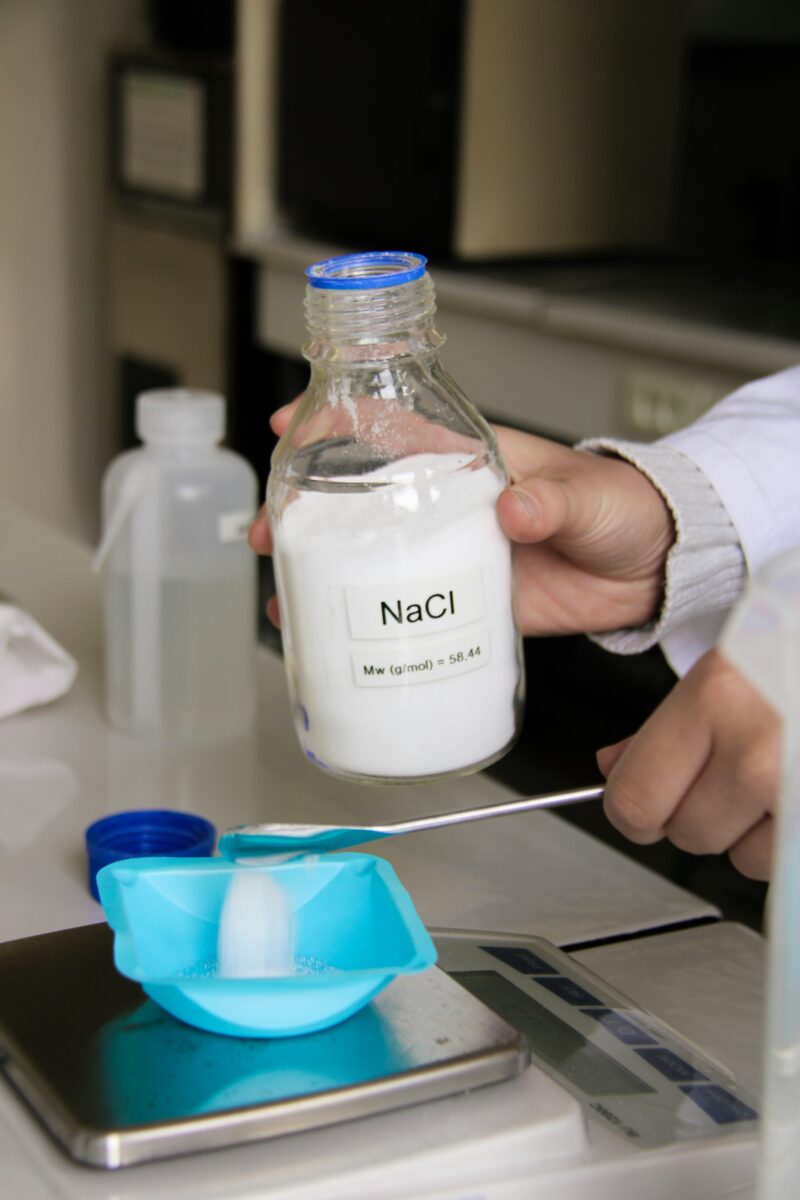Draadloos internet, het WiFi, lijkt een ‘zegening’ van de moderne tijd te zijn. Maar uit talloze documenten blijkt dat EMS of elektro-magnetische straling uiterst schadelijk is voor mens, dier en plant. Onze overheid is op dit vlak blijkbaar helemaal niet geïnteresseerd in het beschermen van haar burgers.
Het eerste artikel verscheen op de website ‘StopSmartMeters ‘
Dit is een uiterst waardevolle verzameling van wetenschappelijke artikelen die keihard aantonen dat er biologische schade ontstaat door het gebruik van WiFi-signalen.
WiFi is overal, op de eerste plaats bij de mensen. Door gebruik te maken van draadloos internet laat men zich, al dan niet bewust, vrijwillig roosteren door de Wifi-stralen. Het draadloze internet staat vaak dag en nacht aan. Ook als men het niet gebruikt. Laat u ook de stofzuiger de hele dag en nacht aan staan omdat u deze misschien nog even wilt gebruiken?
De WiFI-frequentie ligt op 2,4 of 5 Giga-hertz. Ook op scholen is het de normaalste zaak van de wereld om WiFi te hebben. Terwijl de WHO toch al sinds 2 jaar waarschuwt voor de gevaren van elektro-magnetische straling (EMS) en met name WiFi voor kinderen. (kijk hier op deze site)
Hieronder vindt u de lijst met 34 wetenschappelijke rapporten betreffen onderzoeken naar blootstelling aan 16V/m of lager. Uit deze onderzoek blijkt dat WiFi gevaarlijk is! Een tablet-computer gebruikt elektromagnetische velden die hoger zijn dan 16 V/m.
1. Atasoy H.I. et al., 2013. Immunohistopathologic demonstration of deleterious effects on growing rat testes of radiofrequency waves emitted from conventional Wi-Fi devices. Journal of Pediatric Urology 9(2): 223-229. http://www.ncbi.nlm.nih.gov/pubmed/22465825
2. Avendaño C. et al., 2012. Use of laptop computers connected to internet through Wi-Fi decreases human sperm motility and increases sperm DNA fragmentation. Fertility and Sterility 97(1): 39-45.http://www.ncbi.nlm.nih.gov/pubmed/22112647
3. Avendaño C. et al., 2010. Laptop expositions affect motility and induce DNA fragmentation in human spermatozoa in vitro by a non-thermal effect: a preliminary report. American Society for Reproductive Medicine 66th Annual Meeting: O-249http://wifiinschools.org.uk/resources/laptops+and+sperm.pdf)
4. Aynali G. et al., 2013. Modulation of wireless (2.45 GHz)-induced oxidative toxicity in laryngotracheal mucosa of rat by melatonin. Eur Arch Otorhinolaryngol 270(5): 1695-1700.http://www.ncbi.nlm.nih.gov/pubmed/23479077
5. Gumral N. et al., 2009. Effects of selenium and L-carnitine on oxidative stress in blood of rat induced by 2.45-GHz radiation from wireless devices. Biol Trace Elem Res. 132(1-3): 153-163.http://www.ncbi.nlm.nih.gov/pubmed/19396408
6. Havas M. et al., 2010. Provocation study using heart rate variability shows microwave radiation from 2.4GHz cordless phone affects autonomic nervous system. European Journal of Oncology Library Vol. 5: 273-300. http://www.icems.eu/papers.htm?f=/c/a/2009/12/15/MNHJ1B49KH.DTL part 2.
7. Havas M. and Marrongelle J. 2013. Replication of heart rate variability provocation study with 2.45GHz cordless phone confirms original findings. Electromagn Biol Med 32(2): 253-266.https://www.ncbi.nlm.nih.gov/pubmed/23675629
8. Maganioti A. E. et al., 2010. Wi-Fi electromagnetic fields exert gender related alterations on EEG. 6th International Workshop on Biological Effects of Electromagnetic fields.http://www.istanbul.edu.tr/6internatwshopbioeffemf/cd/pdf/poster/WI-FI%20ELECTROMAGNETIC%20FIELDS%20EXERT%20GENDER.pdf
9. Margaritis L.H. et al., 2013. Drosophila oogenesis as a bio-marker responding to EMF sources.
Electromagn Biol Med., Epub ahead of print. http://www.ncbi.nlm.nih.gov/pubmed/23915130
10. Naziroğlu M. and Gumral 2009. Modulator effects of L-carnitine and selenium on wireless devices (2.45 GHz)-induced oxidative stress and electroencephalography records in brains of rats. Int J Radiat Biol. 85(8): 680-689. http://www.ncbi.nlm.nih.gov/pubmed/19637079
11. Nazıroğlu M. et al., 2012. 2.45-Gz wireless devices induce oxidative stress and proliferation through cytosolic Ca2+ influx in human leukemia cancer cells. International Journal of Radiation Biology 88(6): 449-456. http://www.ncbi.nlm.nih.gov/pubmed/22489926
12. Nazıroğlu M. et al., 2012b. Melatonin modulates wireless (2.45 GHz)-induced oxidative injury through TRPM2 and voltage gated Ca(2+) channels in brain and dorsal root ganglion in rat. Physiol Behav. 105(3): 683-92. http://www.ncbi.nlm.nih.gov/pubmed/22019785
13. Oksay T. et al., 2012. Protective effects of melatonin against oxidative injury in rat testis induced by wireless (2.45 GHz) devices. Andrologia doi: 10.1111/and.12044, Epub ahead of print.http://www.ncbi.nlm.nih.gov/pubmed/23145464
14. Papageorgiou C. C. et al., 2011. Effects of Wi-Fi signals on the p300 component of event-related potentials during an auditory hayling task. Journal of Integrative Neuroscience 10(2): 189-202. http://www.ncbi.nlm.nih.gov/pubmed/21714138 (Wi-Fi alters brain activity in young adults:http://wifiinschools.org.uk/resources/wifi+brain+July+2011.pdf)
15. Shahin S. et al., 2013. 2.45 GHz Microwave Irradiation-Induced Oxidative Stress Affects Implantation or Pregnancy in Mice, Mus musculus. Appl Biochem Biotechnol 169: 1727-1751.http://www.ncbi.nlm.nih.gov/pubmed/23334843
16. Türker Y. et al., 2011. Selenium and L-carnitine reduce oxidative stress in the heart of rat induced by 2.45-GHz radiation from wireless devices. Biol Trace Elem Res. 143(3): 1640-1650.http://www.ncbi.nlm.nih.gov/pubmed/21360060
17. Balmori A. 2010. Mobile phone mast effects on common frog (Rana temporaria) tadpoles: the city turned into a laboratory. Electromagn. Biol. Med. 29(1-2):31-35. http://www.ncbi.nlm.nih.gov/pubmed/20560769
18. Erdinc O. O. et al., 2003. Electromagnetic waves of 900MHz in acute pentylenetetrazole model in ontogenesis in mice. Neurol. Sci. 24:111-116 http://www.ncbi.nlm.nih.gov/pubmed/14600821
19. Fesenko E. E. et al., 1999. Stimulation of murine natural killer cells by weak electromagnetic waves in the centimeter range. Biofizika 44:737-741http://www.ncbi.nlm.nih.gov/pubmed/10544828
20. Fesenko E. E. et al., 1999. Microwaves and cellular immunity. I. Effect of whole body microwave irradiation on tumor necrosis factor production in mouse cells, Bioelectrochem. Bioenerg. 49:29-35 http://www.ncbi.nlm.nih.gov/pubmed/10619445
21. Havas M. et al., 2010. Provocation study using heart rate variability shows microwave radiation from 2.4GHz cordless phone affects autonomic nervous system. European Journal of OncologyLibrary Vol. 5: 273-300 http://www.icems.eu/papers.htm?f=/c/a/2009/12/15/MNHJ1B49KH.DTL part 2.
22. Kesari K. K. and Behari J., 2009. Microwave exposure affecting reproductive system in male rats. Appl. Biochem. Biotechnol. 162(2):416-428 http://www.ncbi.nlm.nih.gov/pubmed/19768389
23. Kesari K. K. and Behari J., 2009. Fifty-gigahertz microwave exposure effect of radiations on rat brain. Appl. Biochem. Biotechnol. 158:126-139 http://www.ncbi.nlm.nih.gov/pubmed/19089649
24. Khurana V. G. et al., 2010. Epidemiological Evidence for a Health Risk from Mobile Phone Base Stations. Int. J. Occup. Environ. Health 16:263-267http://www.ncbi.nlm.nih.gov/pubmed/20662418
25. Maier R. et al., 2004. Effects of pulsed electromagnetic fields on cognitive processes – a pilot study on pulsed field interference with cognitive regeneration. Acta Neurologica Scandinavica 110: 46-52 http://www.ncbi.nlm.nih.gov/pubmed/15180806
26. Nittby H. et al., 2008. Cognitive impairment in rats after long-term exposure to GSM-900 mobile phone radiation. Bioelectromagnetics 29: 219-232 http://www.ncbi.nlm.nih.gov/pubmed/18044737
27. Novoselova E. G. et al., 1998. Stimulation of production of tumor necrosis factor by murine macrophages when exposed in vivo and in vitro to weak electromagnetic waves in the centimeter range Bofizika 43:1132-1333.
28. Novoselova E. G. et al., 1999. Microwaves and cellular immunity. II. Immunostimulating effects of microwaves and naturally occurring antioxidant nutrients. Bioelectrochem. Bioenerg. 49:37-41http://www.ncbi.nlm.nih.gov/pubmed/10619446
29. Otitoloju A. A. et al., 2010. Preliminary study on the induction of sperm head abnormalities in mice, Mus musculus, exposed to radiofrequency radiations from Global System for Mobile Communication Base Stations. Bull. Environ. Contam. Toxicol. 84(1):51-4.http://www.ncbi.nlm.nih.gov/pubmed/19816647
30. Panagopoulos D. J.et al., 2010. Bioeffects of mobile telephony radiation in relation to its intensity or distance from the antenna. Int. J. Radiat. Biol. Vol 86(5):345-357.http://www.ncbi.nlm.nih.gov/pubmed/20397839
31. Persson B. R. R. et al., 1997. Blood-brain barrier permeability in rats exposed to electromagnetic fields used in wireless communication. Wireless Networks 3: 455-461.
32. Pyrpasopoulou A. et al., 2004. Bone morphogenic protein expression in newborn kidneys after prenatal exposure to radiofrequency radiation. Bioelectromagnetics 25:216-27http://www.ncbi.nlm.nih.gov/pubmed/15042631
33. Salford L. G. et al., 2010. Effects of microwave radiation upon the mammalian blood-brain barrier. European Journal of Oncology Library Vol. 5:333-355 http://www.icems.eu/papers.htm?f=/c/a/2009/12/15/MNHJ1B49KH.DTL part 2.
34. Salford L. G., et al., 2003. Nerve cell damage in mammalian brain after exposure to microwaves from GSM mobile phones. Environ. Health Perspect. 111:881-883.http://www.ncbi.nlm.nih.gov/pubmed/12782486
Bron; wanttoknow.nl



